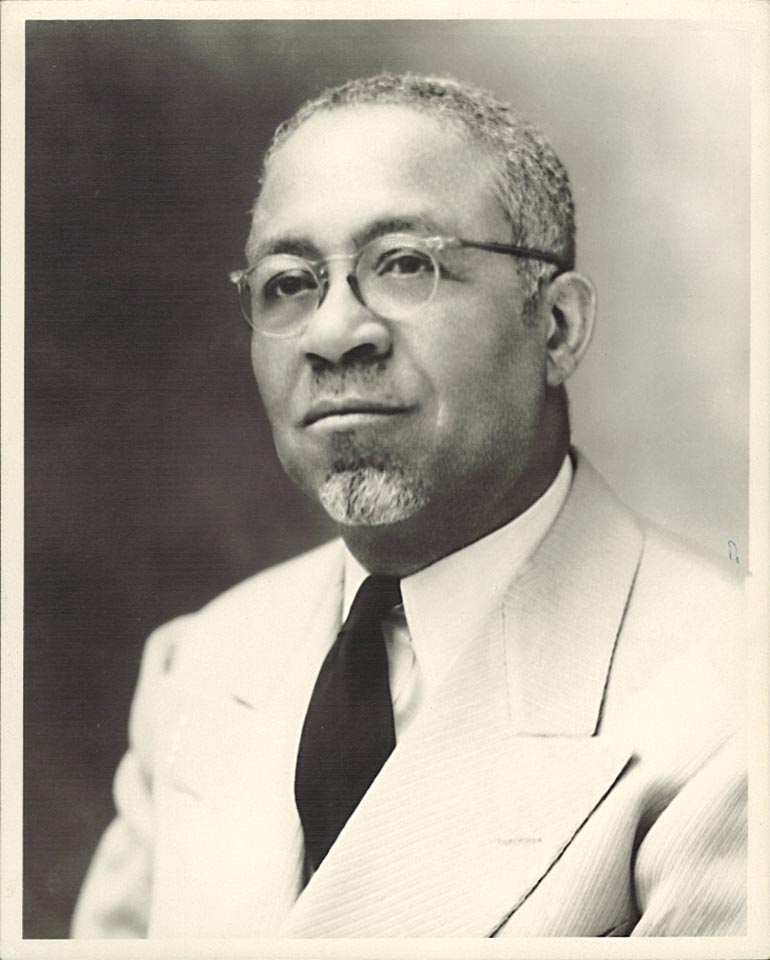Gordon Blaine Hancock, who earned his bachelor’s in 1919 and divinity degree in 1920 from Colgate, set the stage for the civil rights movement.

When Gordon Blaine Hancock took the stage at the Southern Conference on Race Relations in Durham, N.C., in 1942, he had a bold message for his audience of Black educators and intellectuals: “We need not cringe or crawl, tremble or truckle, or even tiptoe.” Rather, the sociologist and minister thundered, the conference should lay out “just what the Negro wants and is expecting of the post-war South and nation.” Hancock was instrumental in organizing the conference, which gathered many leading African American reformers to lay out a platform demanding an end to segregation and discriminatory Jim Crow laws that kept African Americans from voting as well as anti-lynching laws, equal pay, and access
to education.
The so-called Durham Manifesto was one of the pivotal documents in the lead-up to the civil rights movement in the following decades. Though often overlooked today, Hancock was a key figure in the fight for racial equality in the United States, constantly toeing the line between allying with white liberals to advocate for more opportunities for African Americans and advocating for self-reliance that would allow for Blacks to raise themselves up politically and economically.
Born in a poor South Carolina community in 1884, Hancock was exposed to racial violence early when a white mob incensed over voting rights lynched at least five Black men in a neighboring town when he was 14 years old. The incident, his biographer Raymond Gavins later wrote, strongly impacted his sense of racial injustice.
Hancock showed an early aptitude for learning, graduating summa cum laude from Benedict College and becoming a Baptist pastor. With the help of some professors who were Colgate alumni, he entered Colgate and earned another bachelor’s in 1919 — the only Black student at the time. He followed that up with a bachelor of divinity degree a year later.
Hancock excelled at Colgate, earning a prestigious Smith scholarship, becoming class vice president, and giving the valedictory address at his divinity school graduation. Nevertheless, he and his wife felt socially isolated in Hamilton, where they were rarely invited out. Despite those difficulties, he later credited some of his Colgate professors, who treated him as an equal, with convincing him that interracial harmony was possible.
He went on to earn a master’s degree in sociology at Harvard and became a professor at Virginia Union University, where he taught what is thought to be the first course ever on racial relations. For the next several decades, he was a tireless advocate for racial equality, giving hundreds of talks and writing a regular newspaper column that appeared in more than 100 Black newspapers nationwide. He was not afraid to criticize his own community for being divided — earning him the sobriquet among some contemporaries of the “Gloomy Dean.” But he was also a strong advocate for Black self-reliance, pushing African Americans to spend money within their own communities, which he referred to as the term “Double-Duty Dollar.” When a Black person bought from a Black grocer, he said, “he not only gets a loaf of bread but helps to make a place of employment for some aspiring Negro. His dollar does double duty.”
At the same time, he realized that African Americans lacked political power to achieve true equality and worked through the Southern Interracial Commission to challenge white liberals to advocate for legislation to tear down the fabric of Jim Crow. When more radical activists such as Martin Luther King Jr. used civil disobedience to push for civil rights legislation in the 1960s, Hancock welcomed it, calling it “the most constructive departure in race relations since the emancipation of the Negro.” His biographer, Gavins, places Hancock along with a number of other Black intellectuals in forming the bridge between early advocates such as W.E.B. Du Bois and Booker T. Washington and the later civil rights leaders. “Neither an accommodator nor a radical, Hancock was a tough moderate during a generation when race pride and indomitable will enabled Blacks to survive,” Gavins wrote.
In 1969, Colgate recognized the contributions of its groundbreaking alumnus by giving Hancock an honorary doctorate. More recently, Hancock was honored with the name for one of Colgate’s four Residential Commons. A new crest for the Hancock Commons, unveiled in 2020, consists of two parallel bars to “symbolize Gordon Blaine Hancock’s lifelong commitment to equality and civil rights” along with ascending steps on either side to “represent his unrelenting climb to educate himself and improve humanity.”
